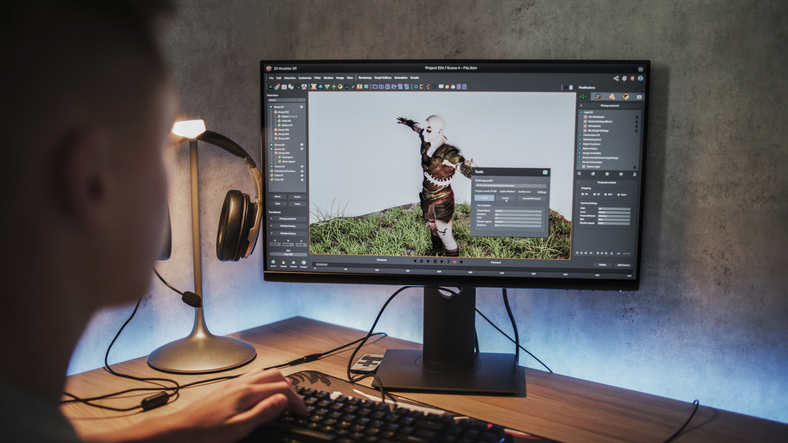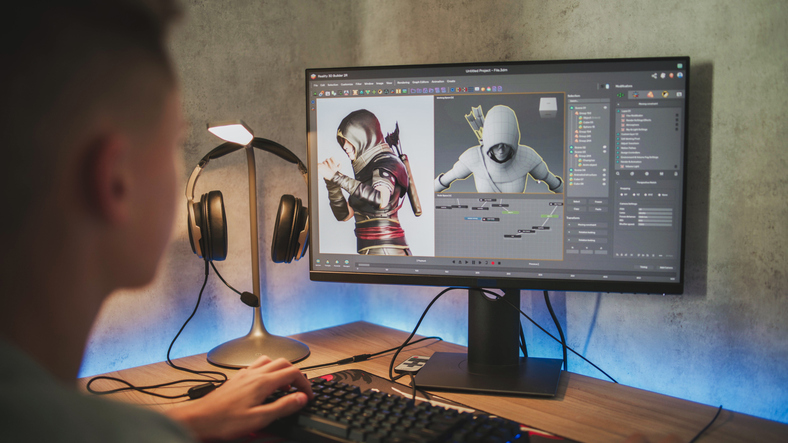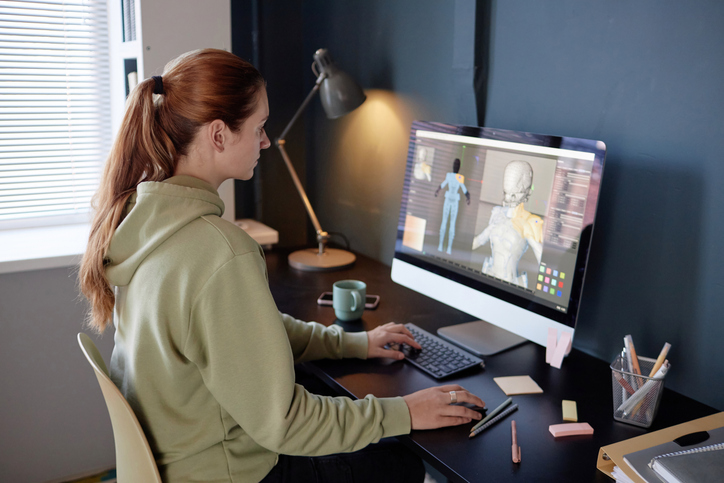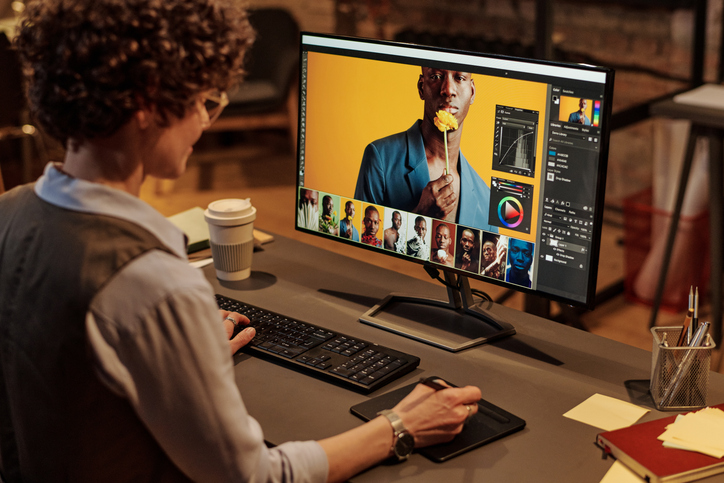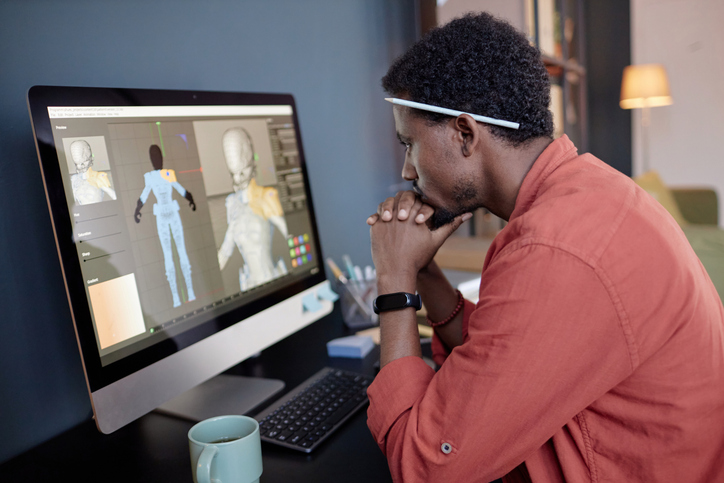Are you someone who finds joy in creating visuals, exploring colour palettes, and designing eye catching layouts? Do you notice logos, posters, or social media designs and wonder how they were made? If yes, you may be drawn to the exciting world of graphic design. But here’s the question many aspiring creatives ask before diving in: How long does it take to learn graphic design?
The answer isn’t always straightforward because graphic design is not a single skill but a vibrant fusion of creativity, software proficiency, visual storytelling, and communication. Whether you’re looking to build a career or explore it as a passion, this guide will walk you through the learning timeline, your options, and how you can speed up your journey, especially with the help of VCAD’s Graphic Design Diploma Program.
What is Graphic Design?
Graphic design is the art and strategic practice of communicating ideas through visual content. It goes far beyond aesthetics graphic design is a powerful tool for storytelling, branding, and user engagement. At its core, it blends creativity, communication, and technology to shape how messages are seen and understood. Using elements such as typography, photography, colour, shapes, icons, and layout, designers create visuals that are not only eye-catching but also purposeful. Whether it’s a sleek business card, a website landing page, a billboard, or an Instagram ad, the goal is the same: to capture attention, convey a message, and influence how people think or feel.
Graphic design is present in every facet of daily life. We see it in logos, product packaging, magazines, mobile apps, posters, advertisements, and even street signs. It defines brand identities, guides user experiences, and enhances the impact of communication. Modern designers use powerful tools like Adobe Photoshop, Illustrator, and InDesign to bring concepts to life transforming rough ideas into polished, professional designs. While creativity is a big part of the process, effective design also relies on understanding how people interpret visual information. That’s why good design doesn’t just look appealing, it works. It solves problems, drives action, and leaves a lasting impression.
Why Learn Graphic Design in 2025?
In 2025, graphic design is more relevant than ever. The digital landscape continues to expand, and brands are competing for attention across platforms like Instagram, TikTok, YouTube, and more. Eye catching, professionally designed visuals are no longer optional, they're essential.
Here are a few reasons why learning graphic design in 2025 is a smart move:
High Demand Across Industries
No matter the field whether it’s tech, healthcare, retail, education, non-profits, or entertainment every organization needs quality design to communicate with their audience. Visual branding and digital assets are essential tools in marketing and business strategy, making skilled designers highly sought after in both traditional and emerging sectors.
Remote and Freelance Opportunities
Thanks to the shift toward remote work and global digital collaboration, graphic design is one of the most flexible creative careers. Designers can work from anywhere, with clients from around the world. Whether you want to work in-house, for an agency, or as your own boss, graphic design offers options to fit your lifestyle and career goals.
Personal and Professional Growth
Graphic design isn’t just a job it’s a mindset. Learning to think visually sharpens your creativity, boosts your critical thinking, and improves your ability to communicate effectively. These are transferable skills that add value in a wide range of careers, from marketing and UX to entrepreneurship and education.
Side Hustles & Entrepreneurship
Graphic design opens doors to countless creative side gigs. You can take on freelance projects, start a print-on-demand shop, sell templates and digital products, or launch your own brand. It’s a high-value skill that empowers you to build income streams on your own terms.
A Future-Proof Career
Design is evolving rapidly with new trends, platforms, and AI tools, motion graphics, and interactive design are reshaping the field. But one thing remains consistent: the world needs visual storytellers. As businesses compete for attention, the demand for strong design will only grow.
Whether you’re aiming to build a professional design career or simply want to boost your creative toolkit, now is a perfect time to begin.
Bonus Read: AI in Graphic Design: The Future of Graphic Designers
How Long Does It Really Take to Learn Graphic Design?
The timeline depends on your goals, learning style, and how much time you dedicate. Here's a breakdown of what you can expect:
|
Level of Proficiency
|
Estimated Timeframe
|
|
Basic understanding of design principles
|
A few weeks
|
|
Proficiency in design software (Photoshop, Illustrator)
|
Several weeks to a few months
|
|
Ability to create simple, effective designs
|
6 months to 1 year
|
|
Advanced skills + professional portfolio
|
1 - 2 years
|
|
Becoming a confident, and top designer
|
2 - 3 years with consistent practice
|
Some people can pick up basic skills quickly especially if they have an artistic background or prior experience. Others may take longer, especially when balancing learning with other commitments. The good news is you don’t need to master everything overnight. With the right structure and support, progress can be much faster.
Graphic Design Learning Options Compared
There are several ways to learn graphic design, each with its own timeline and benefits. Here’s a look at the most common options:
1. Self Taught (DIY Route)
- Timeframe: 6 months to several years
- Cost: Free to low cost
- Pros: Flexible, affordable, great for casual learners
- Cons: Lack of structure, no feedback, slow progression
This path includes watching YouTube tutorials, reading blogs, and practicing on your own. While it’s accessible, it can be difficult to stay motivated or know what to learn next. Plus, feedback and mentorship are limited.
2. Online Courses & Bootcamps
- Timeframe: 3 to 12 months
- Cost: Low to Moderate
- Pros: Structured lessons, guided learning, access to instructors
- Cons: May lack depth or career support
Courses from platforms like Skillshare or Udemy are great for specific skills, but often lack comprehensive training in design thinking, portfolio development, or career readiness.
3. Formal Education: Diploma or Degree Programs
- Timeframe: 1 to 4 years
- Cost: Moderate to high
- Pros: Comprehensive training, mentorship, industry tools, portfolio support
- Cons: More time commitment, varies in flexibility
This is the most effective option for those seeking a career in graphic design. Programs like the Graphic Design Diploma at VCAD offer hands on experience, real world projects, and one on one feedback to help you grow faster and smarter.
Bonus Read: How to Become a Graphic Designer in Canada
How VCAD Helps You Learn Graphic Design Faster and Smarter
At VCAD (Visual College of Art and Design), we understand that your time is valuable and your future matters. That’s why our Graphic Design Diploma Program is built to give you everything you need to become a confident, job-ready designer in less time.
Here’s how VCAD accelerates your learning:
- Project Based Learning: You’ll work on real world creative briefs from day one. Whether it’s logo design, packaging, or social media graphics, every project builds your skills and your portfolio.
- Master Industry Tools: Learn to navigate Adobe Creative Cloud like a pro Photoshop, Illustrator, InDesign, and more with guided support and hands on assignments.
- Mentorship from Industry Pros: Our instructors are seasoned designers with real world experience. They’ll guide you, give feedback, and share insights you won’t find in textbooks.
- Career Support: From portfolio development to resume help and interview prep, VCAD’s career services team ensures you’re ready to enter the job market with confidence.
- Flexible Learning Options: Choose between online or in class learning to fit your lifestyle, whether you're balancing a job, family, or both.
- Graduate with a Professional Portfolio: By the time you finish the program, you won’t just have skills, you’ll have a portfolio that employers want to see.
Tips to Accelerate Learning Graphic Design
Want to learn faster and more effectively? Here are some strategies to help you get ahead:
- Start with the Fundamentals: Don’t skip over the basics. Understanding typography, colour theory, composition, and visual hierarchy will make every future design better.
- Practice Regularly: Set aside time every day or week to work on small design challenges. The more you design, the more intuitive it becomes.
- Seek Feedback: Share your work with mentors, peers, or online communities. Constructive criticism is one of the best tools for growth.
- Study Great Design: Analyse websites, ads, and print materials. Ask yourself: What works? What would you change? This sharpens your design eye.
- Experiment with Style: Try different styles, layouts, and tools. Your creative voice develops through exploration and play.
- Stay Updated: Follow design blogs, join communities like Behance or Dribbble, and stay current with trends and software updates.
Final Thoughts
So, how long does it take to learn graphic design? The short answer: it depends on your goals and how you learn. The long answer: with the right tools, support, and dedication, you can go from beginner to job ready designer in a matter of months not years.
If you're serious about building a creative career, there’s no better time to start than now and no better place to start than VCAD.
Ready to turn your passion into a profession?
Learn more about VCAD’s Graphic Design Diploma Program and start designing your future today.
